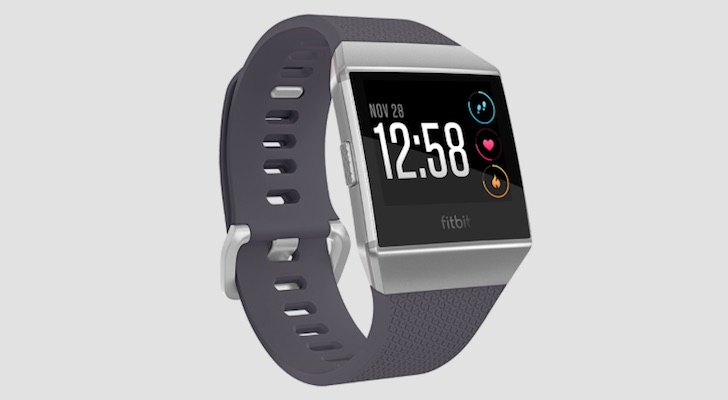It could have been worse. But, if Fitbit (NYSE:FIT) investors are being honest with themselves, it should have been better. The company managed to top last quarter’s expectations, but it also lost market share. If Fitbit stock is ever going to snap out of its funk, it’s got to start gaining on that front.
More than that, however, it’s got to do it fast, as in the quarter currently underway.
Yes, the “now or never” speech has been given of Fitbit more than once of late. Yours truly here, in fact, stood on that soapbox a little over year ago, suggesting the then-new Ionic watch needed to do well during the fourth quarter of last year if FIT stock was to have any hope of maintaining credibility with investors.
It did just well enough, buying some time in the meantime, aided by cost-cutting measures and the launch of the Versa smartwatch along with the Charge 3 tracker.
Still, the clock is ticking. Fitbit has to show investors something solid with its mid-market mission in fourth quarter, or it’s once again game-over.
Good News/Bad News on Fitbit Stock
Fans and followers might be confused, knowing the FIT stock price jumped nearly 26% back on Nov. 1 after posting impressive third quarter numbers. Fitbit earned four cents per share on revenue of $393.6 million, versus estimates for a profit of only one cent per share of Fitbit stock and a top line of $381.3 million.
The foray into smartwatches seems to be paying off. That category now makes up 49% of the company’s total revenue, with the higher-priced Versa driving the average selling price of devices sold during the quarter to $108.
It looks on the surface to be a step forward, and maybe it is.
All things are relative though, and there’s a big footnote that has to be included with last quarter’s results. Third quarter revenue was barely up from the year-ago figure of $392.5 million. Had it not been for legitimate and needed cost-cutting, Fitbit’s swing from the year-earlier loss of one cent per share may not have been as impressive.
Non-GAAP gross margins fell from 45.2% to 40.1%. It’s a metric that indicates Fitbit doesn’t have the pricing power it used to. Generally speaking, margins should improve as unit prices rise.
Fitbit stock, by the way, has given back roughly half of its post-earnings gain as investors have digested the uglier side of its Q3 numbers. Some eyebrow-raising data from IDC published earlier in the week only added to the selling pressure.
Market Share and Fitbit Stock
As it turns out, through a longer-term lens Fitbit may be the number-two smartwatch brand, but it’s coming at a price. Last quarter, IDC reports, Xiaomi (OTCMKTS:XIACF) topped Apple (NASDAQ:AAPL) in terms of total wearablessold, and Apple topped Fitbit, leaving it in third place overall. Worse, Fitbit was the only name in the top three to lose wearables market share in Q3.
Let that sink in for a moment, by way of repeating it. Fitbit was the only wearables maker to lose market share in the third quarter, in terms of total units sold.
It was only a 3.1% dip in share, but for a company like Fitbit that’s been struggling for too long and needs to prove something — and prove it fast. Nothing is ever insurmountable, but if the third quarter’s wearables market share breakdown is the beginning of a trend, the fourth quarter’s numbers could be relatively disappointing to a crowd that has no room left to absorb disappointment. Even a small setback can turn into a huge liability.
It’s especially concerning to see that kind of weakness headed into the all-important holiday shopping season.
The Middle Ground and Fitbit Stock
Given the age and maturity of the wearables and smartwatch industry, one can’t help but wonder if Fitbit’s challenge is being right where it doesn’t need to be at this time.
It wouldn’t be accurate to call smartwatches a commodity, at least not yet. Indeed, the fact that consumers are still willing to shell out a minimum of $279 for an Apple watch says the right device can still command a premium price.
At the other end of the spectrum are sub-$100 smartwatches. They’re clearly no Apple device, but they’re stunningly cheap and deemed high-tech enough to satisfy the cost-conscious.
That leaves Fitbit’s Versa in a difficult positions. Priced at $199 apiece, it neither carries the premium Apple name, nor is it the most affordable option for consumers that don’t care about labels.
There is clearly some sort of market for the Versa, as last quarter’s results suggest. But, there’s always a minimum number of willing buyers for a device. The question is, are there enough of them to continue driving Fitbit’s smartwatch business firmly into the future? Given how crowded the smartwatch market has become, it seems unlikely.
But lower-end fitness trackers?
IDC’s senior research analyst Jitesh Ubrani isn’t so sure that’s going to be market with longevity for Fitbit either. He explained within the recent wearables report:
“As more features get added and as the price differential between basic trackers and smartwatches narrows, brands could potentially move consumers upstream to smartwatches.”
That trend seemingly dovetails into Fitbit’s new focus, but again, with cheaper and more premium options available, the blurring of the lines between trackers and smartwatches still leaves Fitbit in something of a no-man’s land, price-wise.
Bottom Line for Fitbit Stock
The fourth quarter is likely to be one of the last chances owners of Fitbit stock give the company to prove addressing the middle of these markets is the right strategy.
As of this writing, James Brumley did not hold a position in any of the aforementioned securities. You can follow him on Twitter, at @jbrumley.

